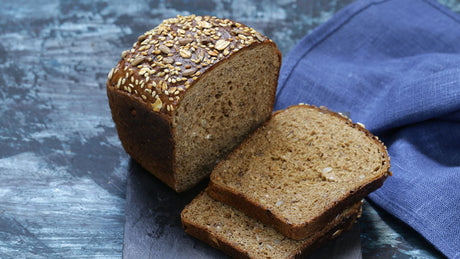
Easy 100% Rye Sourdough Bread Recipe
By Lisa Robitaille
Baking a 100% rye sourdough rye bread is more than a recipe. It is a return to old-world traditions, to the quiet strength of pioneer kitchens and the resilience of...

By Lisa Robitaille
Baking a 100% rye sourdough rye bread is more than a recipe. It is a return to old-world traditions, to the quiet strength of pioneer kitchens and the resilience of...

By Lisa Robitaille
Each swirl of cinnamon and cardamom holds a story—of trade winds, grandmothers, and the quiet strength of slow fermentation. Lisa Robitaille Table of contents A Memory in Cinnamon: My Grandmother’s...
Read more
By Lisa Robitaille
The Science of Yeast, Bacteria & the Pillow Effect If you’ve only ever worked with a 100% hydration sourdough starter, switching to a 60% hydration stiff starter might feel like...
Read more
By Lisa Robitaille
This heartfelt post shares the story behind Lisa’s favourite lemon meringue pie—an heirloom recipe rooted in memory and made with care. It features a bright, silky lemon curd, a golden...
Read more
By Lisa Robitaille
Table of contents How Rare and Beautiful It Is Blueberry Muffin Ingredients The Night Before The Next Morning Streusel Topping Directions Step 1 Step 2 Step 3 Step 4 Step...
Read more
By Lisa Robitaille
This post blends family tradition with modern sourdough baking, featuring a flaky, naturally fermented pie crust recipe. Inspired by the author’s grandmother, who baked pies in rhythm with the seasons,...
Read more
By Lisa Robitaille
Guinness Sourdough Bread is more than a recipe — it’s a story of tradition, flavour, and history. This unique bread blends the bold, malty richness of Guinness stout with the...
Read more
By Lisa Robitaille
This comprehensive guide will show you everything you need to know about using and maintaining your banneton for perfect loaves every time. Learn how to properly flour your banneton, care...
Read more
By Lisa Robitaille
Shrove Tuesday pancakes have a long, beautiful history — a tradition of using what remained in the pantry to honour the changing seasons. Whether you follow the faith or simply...
Read more
By Ella Bigras
True wellness isn’t found in the constant hustle—it’s rooted in the gentle ebb and flow of life’s seasons. By aligning with nature’s rhythms, we can embrace moments of renewal, reflection,...
Read more
By Lisa Robitaille
Sourdough is a quiet teacher, whispering lessons of patience and care. With each fold of the dough, we learn to slow down, to breathe, and to trust the process. It’s...
Read more
By Ella Bigras
Who needs an official holiday to enjoy pizza? At Great Lakes Sourdough, every day is a pizza celebration! In this blog, I share my favourite tips for perfect homemade pizza, from...
Read more
By Lisa Robitaille
Winter has a way of asking us to pause. As the seasons shifted from summer to autumn, I found myself slowing down, spending more time outside, and observing nature’s rhythm...
Read more